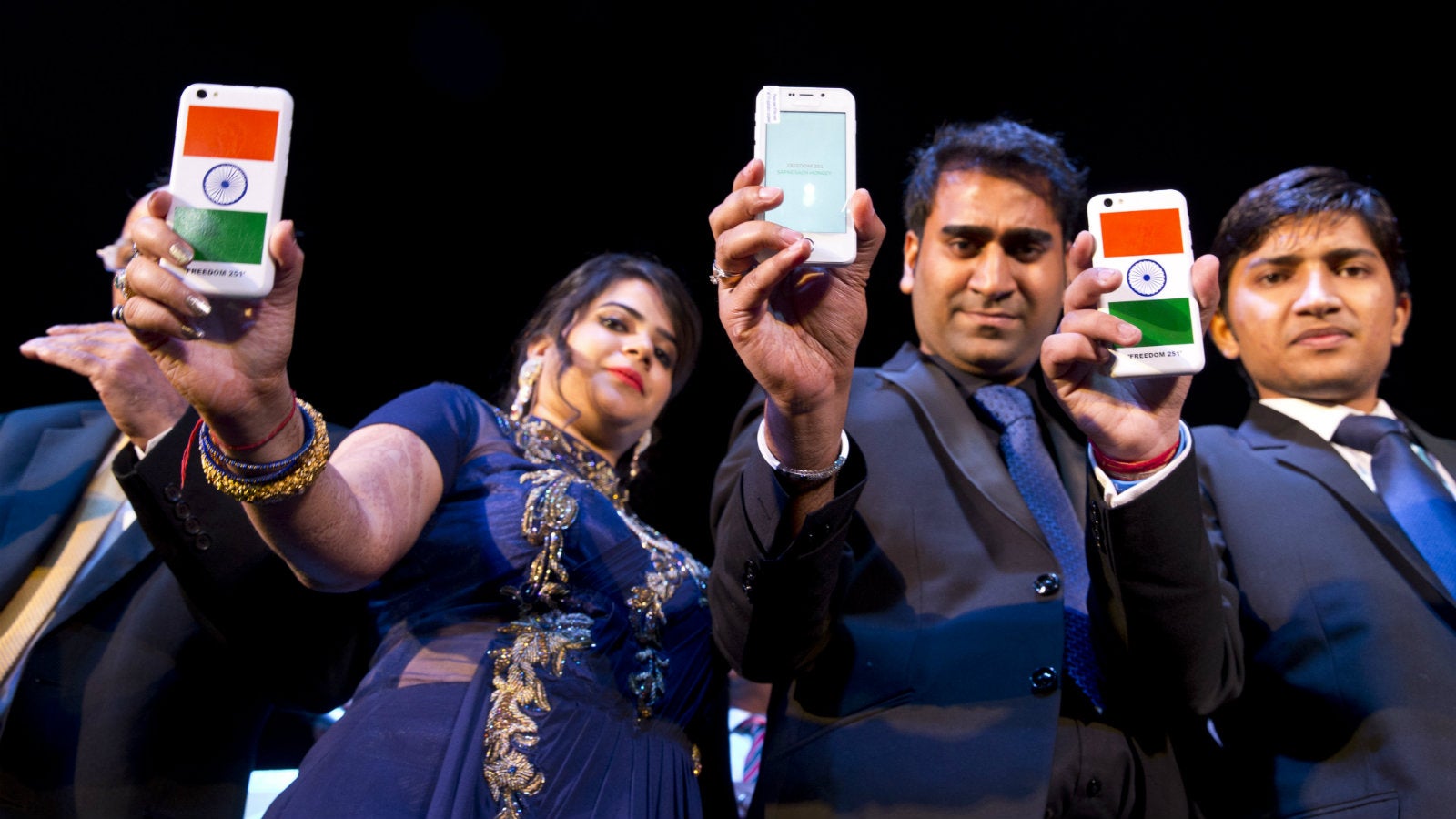Everyone wants to sell the “cheapest” smartphone in India
There is a race to sell inexpensive handsets in the world’s fastest-growing smartphone market.


There is a race to sell inexpensive handsets in the world’s fastest-growing smartphone market.
The Indian market already has around 70 smartphone brands priced lower than $100, according to market research firm Counterpoint.
On Aug. 23, South Korea-based Samsung launched one of its cheapest smartphones in India. The Z2 will cost just Rs4,590 ($68), $90 lower than the average price of a smartphone sold in the country. Samsung’s new model will start selling from Aug. 29.
Earlier, in January 2015, Samsung had launched the Z1 at an even lower price of Rs4,299.
Other global players such as Lenovo and Xiaomi, too, have flooded India with sub-$100 models. Meanwhile, domestic companies like Micromax, Intex, and Lava are already top contenders in the space.
Besides, several new startups have announced dirt cheap devices in India over the past few months.
For instance, in February, Delhi-based Ringing Bells launched the “world’s cheapest smartphone.” Its product, Freedom 251, is priced at a jaw-dropping Rs251 ($4). The company said it received 7.5 crore registrations and is already shipping phones to customers.
In April, Jaipur-based Docoss launched an Android-powered smartphone priced at just Rs888.
Bengaluru-based Namotel announced a smartphone called Acche Din in May, which the company said would sell at an unbelievable Rs 99.
“Since there is so much competition in the affordable smartphone segment, companies are now trying to offer even lower prices to set themselves apart. Samsung’s move is also in the same direction,” Tarun Pathak, senior telecom analyst at Counterpoint, said.
However, makers of these ultra-low priced phones have also faced criticism over false claims and hidden costs. In March, a police complaint was filed against Ringing Bells alleging that Freedom 251 was a ponzi scam and that the company had raised funds by issuing misleading advertisements.
Meanwhile, Namotel’s Rs99-smartphone reportedly had hidden charges. It could be booked only after registering on a website called Bemybanker.com, which charged a one-time membership fee of Rs199.
Cheap sells
The sub-$100 category dominates the price-sensitive Indian market, and the trend is unlikely to reverse in the near future.
India has some 700 million mobile phone users, according to Counterpoint Research, while the country’s smartphone user base is only over 220 million. This means around 550 million Indians are still using feature phones and may graduate to smartphones in the coming years.
Most of these first-timers are likely to buy inexpensive models, Pathak said. “So companies are likely to continue launching phones in the affordable segment at least for the next six to eight quarters,” he said.